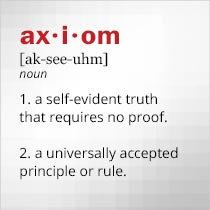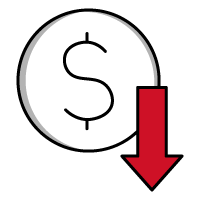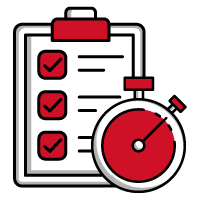Scanning the Specifications of a Spectrum Analyzer
September 25, 2017
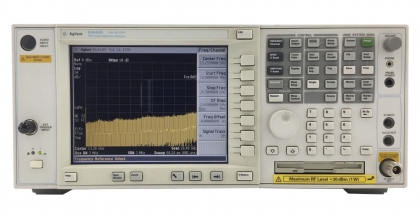 |
Spectrum analyzers are among the most versatile of electronic test instruments, with versions now available for the benchtop, battery-powered for the field, and even with USB connectors for use with a computer. A spectrum analyzer displays signal amplitude as a function of frequency, and it can be used to study known signals or to find unknown signals. Those in need of a spectrum analyzer will find many different choices—by understanding how the specifications fit their needs, they can make the right choice.
The most essential specifications of a spectrum analyzer refer to frequency and amplitude, such as the frequency range, resolution bandwidth (RBW), frequency accuracy, signal sensitivity, dynamic range, and amplitude accuracy. The frequency range of an analyzer simply defines the minimum to maximum frequencies it can detect and display. Spectrum analyzers are available with many different frequency ranges, from RF through millimeter-wave frequencies. Just how much is enough?
Finding the Frequency
An analyzer should have enough frequency range to provide a reasonable amount of bandwidth in the lower and upper sidebands of a signal frequency of interest. In addition, if harmonics are a concern, two or three times the frequency of interest should be added to a spectrum analyzer’s measurement range to account for second- and third-harmonic frequencies, respectively. (For more on the measurement bandwidths needed for harmonic testing, please refer to the July 2017 blog "Harmonic Content Versus the Bandwidth That Your Engineers Require".)
Spectrum analyzers include RBW filters to measure a signal of interest without surrounding noise. To measure Wi-Fi signals, whether from a device under test (DUT) or with an antenna connected to the analyzer’s input port, the analyzer must cover a frequency range of at least 2.40 to 2.48 to detect and display any Wi-Fi signals, which might be located at center frequencies of 2.412 and 2.417 GHz. For relatively closely spaced frequencies such as these, the analyzer must also have sufficient frequency resolution to be able to detect and display the two signals as separate signals and not just as a single signal event on the screen. If the measurement need is for analyzing closely spaced, narrowband signals, then an analyzer with suitable frequency range and with narrow RBW filter will make this possible.
Of course, having a wide range of RBW filter bandwidths provides the flexibility to enable viewing the full width of a wideband signal, and switching to a narrower RBW to study fine details in the signal amplitude, such as amplitude ripple.
Traditional spectrum analyzer are based on superheterodyne, swept-tuned receiver architectures that can be tuned like a radio, to look for a specific signal, or across a frequency range, from a start to a stop frequency, in search of signals within that frequency range. The swept-tuned approach locates all signals that fall within the tuned RBW filter bandwidth, but can miss a signal that is not constant, but occurs after the filter has been tuned to its frequency. The signals appearing on the screen may be shown with some delay, according to the sweep speed of a measurement. An instrument with a wide frequency range and wide RBW filter range provides the measurement versatility to capture a wide variety of continuous and pulsed signals.
As an example, the Agilent / Keysight PSA series of spectrum analyzers has six models each starting at 3 Hz and extending to 6.7 (model E4443A), 13.2 (model E4445A), 26.5 (model E4440A), 42.98 (model E4447A), 44.0 (model E4446A), and 50 GHz (model E4448A), each with selectable resolution bandwidths from 1 Hz to 8 MHz. These analyzers use a combination of fundamental- and harmonic-frequency mixing and analog-to-digital conversion to achieve instantaneous measurement bandwidths of 10, 40, or 80 MHz with selected options, allowing the capture of all signals within those bandwidths, and differentiation of closely spaced signals by means of the RBW filters. The high frequency resolution of 2 Hz helps to analyze closely spaced signals; in addition, these analyzer include frequency counter circuitry which can provide resolution as good as 0.001 for the frequency indicated by placement of an on-screen marker.
Another type of spectrum analyzer, known as a real-time spectrum analyzer (RSA), makes use of high-speed analog-to-digital converters (ADCs) and digital signal processing (DSP) to digitize all signals within a wide instantaneous bandwidth, so that signals are shown as they occur.
In contrast to a RBW specification, an RSA uses a specification typically known as the acquisition bandwidth to define how wide a portion of spectrum can be captured in one instant. All signals within the acquisition bandwidth are digitized and stored in the RSA’s memory. As a result, the measurement time for a given acquisition bandwidth, is a function of the amount of memory within the analyzer. Larger amounts of memory, which provide longer measurement times, are beneficial when hunting for transient and intermittent signals.
As an example, the Tektronix RSA5000 series includes four models, which all start at 1 Hz and top off at 3.0 (model RSA5103B), 6.2 (model RSA5106A and RSA5106B), 15.0 (model RSA5115B), and 26.5 GHz (model RSA5126A and RSA5126B). The instantaneous or acquisition bandwidths range from 100 Hz to 110 MHz, with different sampling rates and amounts of signal recording memory used depending upon the acquisition bandwidth. The narrowest acquisition bandwidths occur at the slowest sampling rates, and occupy the least amount of memory, resulting in the longest measurement records and the longest possible measurement times in search of transient events. Conversely, wider acquisition bandwidths are sampled at higher rates, occupying more memory and resulting in shorter record lengths and shorter total measurement times.
Gauging the Amplitude
A spectrum analyzer’s amplitude measurement capabilities are largely defined by the dynamic range, which is essentially set by the displayed average noise level (DANL) at the lowest levels and the third-order intercept (TOI) or maximum input signal that can be measured without distortion. In the Rohde & Schwarz FSW signal and spectrum analyzer series, which includes instruments with total frequency range as wide as 2 Hz to 67 GHz, the typical TOI is about +28 dBm. The lower limit to the dynamic range, the DANL, depends on a number of available optional components, such as an internal preamplifier. Without the preamplifier, for example, the DANL ranges from -141 to -151 dBm depending on frequency. With the preamplifier, the DANL improves to as good as -166 dBm, for an amplitude measurement range that is capable of detecting and displaying the lowest-level signals. What actually appears on the screen will depend on where the reference level is set so; in this case, the reference level should be adjustable to accommodate the lowest-level signals (it can be set from -10 to -130 dBm).
These basic specifications provide a starting point in matching measurement requirements with an available instrument. Spectrum analyzers have advanced a great deal in recent years from large and heavy benchtop instruments to more portable battery and USB-powered instruments that can connect to a laptop computer as the control center and display. For example, the RSA5000 series of spectrum analyzers from Tektronix are fully capable RSAs with 40-MHz acquisition bandwidths for frequency ranges as wide as 9 kHz to 7.5 GHz, but they measure only 10.68 × 11.78 × 2.65 and weigh 5.6 lbs. The battery-powered, handheld instruments use a USB connection and software on the computer to match the performance of the full-sized instruments, but with the portability needed for making on-site, in-the-field measurements.
More information on these and other spectrum analyzers, including downloadable data sheets, is available by contacting Axiom Test Equipment’s sales department at sales@axiomtest.com or by calling 760-806-6600.
Back to BLOG


